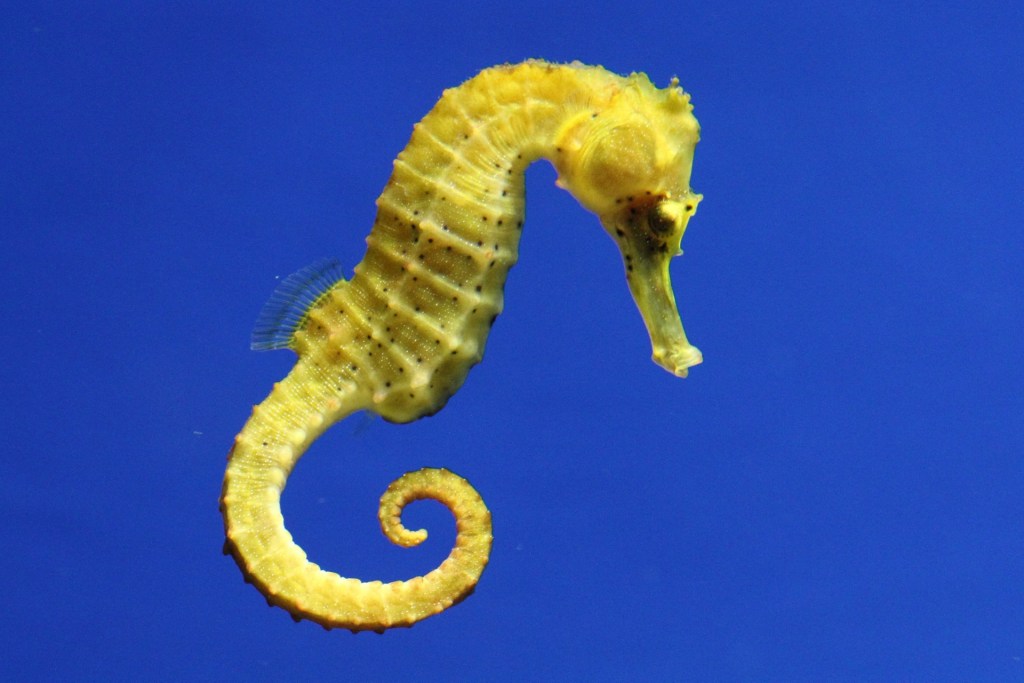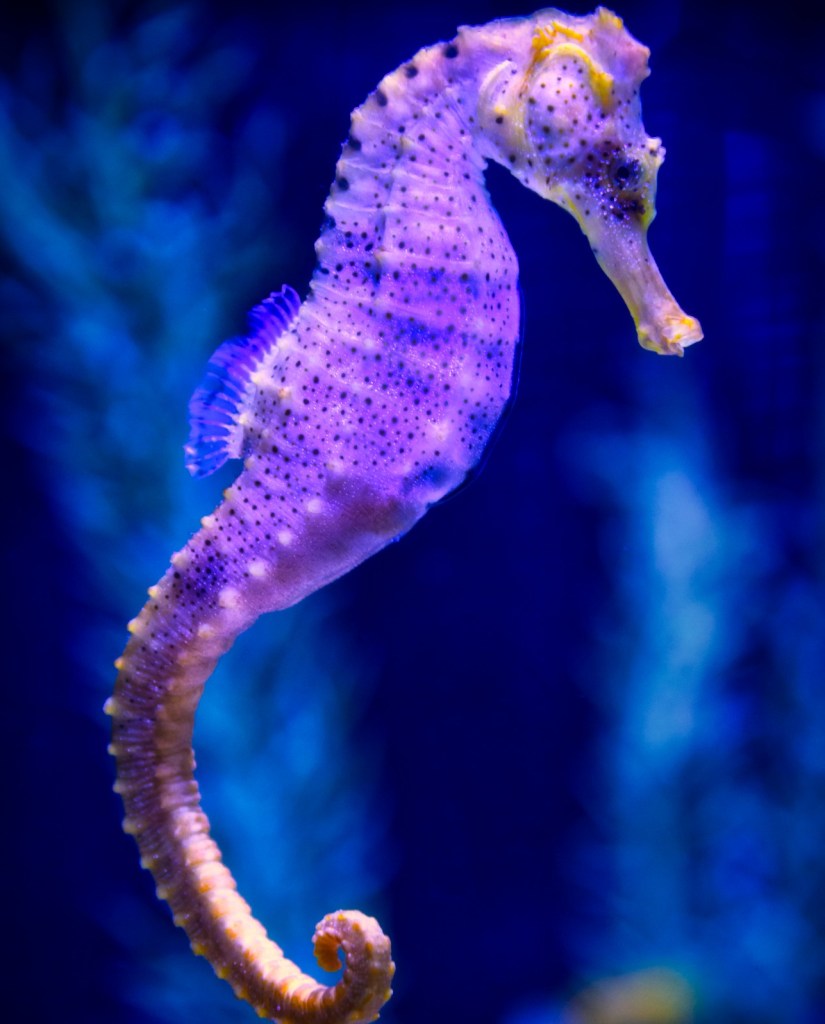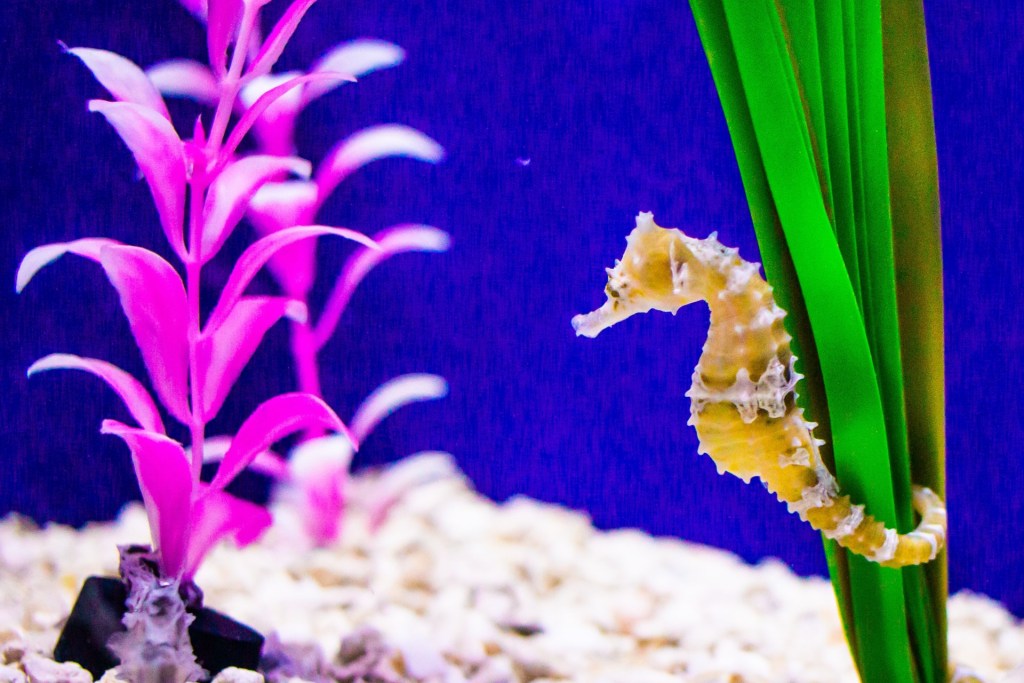Good news, aquarium hobbyists: Yes, you can keep seahorses as pets. Seahorses are very entertaining fish to watch. They are one of only two fish that swim upright. Male seahorses hold seahorse eggs until they hatch. Seahorses are quite interesting creatures, and if you’re interested in having a pet seahorse, read ahead to learn about what that entails.

The best habitat for your pet seahorse
First and foremost, remember that seahorses can only live in saltwater, meaning you must maintain a saltwater aquarium.
- Salinity: This saltwater must have a salinity, or amount of salt, close to that of the ocean. The salinity of the ocean is usually between 34 to 37 parts per 1,000 units of water. You must check the salinity of a saltwater aquarium daily by measuring it with a hydrometer or refractometer. Water will gradually evaporate from any aquarium, leaving salt behind. That means to adjust the salinity of your aquarium, you will need to add fresh water to dilute the residual salt.
- Temperature: As pets, seahorses are known to be finicky and require particular conditions to thrive in. Among these is the temperature of their water, which must be kept between 70 and 74 degrees Fahrenheit — somewhat colder than most other fish prefer.
- Maintenance: You must switch out all the water in the aquarium every week or so, at least for the first few months after it has been set up. To switch out saltwater, you must make your own saltwater or sterilize “wild” seawater with a UV light. Saltwater aquariums also require special filters, daily pH testing, and regular algae scrubbing. Again, seahorses have even stricter water condition requirements than your average fish, including a particular water flow rate.

The best tankmates for your pet seahorse
Seahorses do best in groups and can be frightened by fast or aggressive fish like triggerfish or tangs. If you keep them with other fish, choose docile and slow species such as the goby. Seahorses can also coexist with bottom-dwelling sea creatures, including snails and shrimp. You should not keep corals and seahorses in the same tank, as seahorses may injure themselves on the corals.
Seahorses are prone to becoming stressed in aquariums in general and should be given a peaceful and spacious environment to live in. Remember that they prefer a colder environment than a lot of other fish, so take that into account before getting any tankmates.

The best diet for your pet seahorse
Seahorses eat quite a lot and must be fed every single day. They will primarily eat fresh shrimp or shrimp brine, which should be supplemented with frozen mysis. Because seahorses are messy eaters and consume high-protein, high-fat foods and do not digest them completely, you will find a lot of leftover food and seahorse waste in their aquarium. However, seahorses do best in very clean water. An excellent water filter and frequent tank cleanings are paramount for this reason.
Know before you buy pet seahorses
- You should never take a seahorse from the wild. Buy only from reputable breeders who have been known to successfully raise captive seahorses. Seahorses raised in captivity are more expensive than wild seahorses. Captive-bred seahorses are less prone to diseases and stress than their wild counterparts and will take frozen foods in addition to fresh ones.
- Seahorses are not recommended as a fish for beginners. Prior to purchasing seahorses, you should already have their aquarium set up. You should also have the necessary tool for maintaining a saltwater aquarium and an adequate supply of seahorse food on hand. Consider joining a local or online aquarist club to learn about keeping seahorses from those who have experience.
Seahorses are pretty and unique, but they do require a big commitment. They also make relatively good pets if you have the experience and supplies necessary to properly take care of them. If you’ve been debating whether or not to get a seahorse for your aquarium, do your research before making a quick decision. And if you do end up getting a seahorse, enjoy your new pet!
Editors' Recommendations
- What causes high pH in an aquarium? We’ll walk you through getting your tank levels in check
- A simple guide to what to feed tadpoles in your aquarium
- What fish can live with bettas? These are your best bets for fish buddies
- Check these 3 things immediately if you have fish swimming at the top of the tank
- What you need to know about sugar gliders before you get an exotic pet



